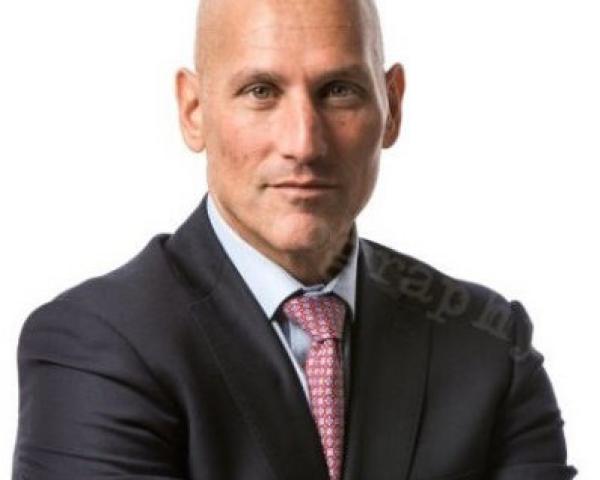The Employee Retirement Income Security Act (ERISA) has been around since the Ford administration. Most people know the law in relation to retirement benefits, but it’s emerging as an unexpected, yet high-potential, opportunity to drive change in the dysfunctional U.S. healthcare system.
The law sets fiduciary standards for using funds for self-insured health plans, which is how more than 100 million Americans receive health benefits. Health plans for wise companies with more than 100 employees are self-funded because they are generally less costly to administer. As a result, more than $1 trillion in annual healthcare spending is under ERISA plans or out-of-pocket by ERISA plan participants. While it's roughly one-third of healthcare spending, employer/union-provided health benefits likely represent more than two-thirds of industry profits as they wildly overpay for healthcare services because of the misperception that PPOs help save them money. In reality,
PPO networks cost employers/unions dearly.

This overpayment makes ERISA plans an attractive target for operational efficiencies. Healthcare is the last major bucket of operational expenses that most companies haven’t actively optimized (they've already optimized operations, sales, marketing, etc.). For those that
don’t get on top of this, it could also be a source of significant potential liability for companies and plan trustees. We are already aware of the ripple effect on benefits departments — one entire benefits department (with the exception of one person) was fired when the board realized the lack of proper management.
See also: ERISA Bonding Reminder
ERISA requires plan trustees to prudently manage health plan assets. Yet very few plans have the functional equivalent of an ERISA retirement plan administrator who actively manages and drives effective allocation of plan investments. This person (or team) would have deep actuarial and healthcare expertise to enable them to deeply understand and negotiate potential high-cost areas of care, something traditional human resource departments lack.
At the same time, it’s broadly estimated that there is enormous waste throughout the healthcare system. The Economist has
reported that fraudulent healthcare claims alone consume $272 billion of spending each year across both private plans and public programs like Medicare and Medicaid. The Institute of Medicine conducted a
study on waste in the U.S. healthcare system and concluded that $750 billion, or 25% of all spending, is waste. PwC went so far as to
say that more than half of all spending adds no value. It's impossible to imagine any CEO/board allowing this in any other area of their company.
Increased outside scrutiny on how ERISA-regulated health plans spend their dollars could create immense potential liability for both company directors and health insurers across the country. Nationally prominent lawyers, auditors and others are catching on to this and are taking action to get ahead of it or are advancing potential new categories of litigation that could result in hundreds of billions in damages.
In just the last couple of months, we at the
Health Rosetta Institute — a nonprofit focused on scaling adoption of practical, nonpartisan fixes to our healthcare system — have learned of some key events that will likely further increase scrutiny on ERISA fiduciary duties.
First, two Big Four accounting firms have refused to sign off on audits that don’t have allowances for ERISA fiduciary risk. A senior risk management practice leader at one of those firms told a room of healthcare entrepreneurs and experts that ERISA fiduciary risk was the largest undisclosed risk they'd seen in their career. As more accounting firms start to require this, it will change how employers manage ERISA health plan dollars.
Second, independent directors have quietly sounded the alarm to three company auditors about this growing issue, recognizing the potential for personal financial liability that director and officer insurance policies may not cover. We expect to see more of them focusing on this issue, given that healthcare spending is roughly 20% of payroll spending for most companies.
Third, attorneys are building litigation strategies around employers filing suits against their ERISA plan co-trustees (the plan administrators who actively manage the plan’s health dollars) alleging they breached their ERISA fiduciary duties by turning a blind eye to fraudulent claims. We expect the first of these cases to be brought this year and expect to see significantly more in the next couple years. One firm we’re aware of is working on cultivating dozens of these cases.
The implications of this third trend could be enormous. If boards and plan trustees know fraud
could exist and don’t take action to rectify the issues, they could open themselves to liability from shareholders and plan beneficiaries. The scale of damages just for fraudulent claims could be on the magnitude of lawsuits over asbestos and tobacco. A very conservative estimate of what percentage of claims are fraudulent is 5% (many believe 10-15% is more accurate). Employers spend more than $1 trillion per year on healthcare. If you take the low-end estimate (5%) and extrapolate over the statutory lookback period for ERISA (six years), that would be $300 billion.
These legal threats could force employers to actively manage health spending the same way they manage other large operational expenses. We’ve already seen companies doing this,
reducing their health benefits spending by 20-55% with superior benefits packages.
Employers use a variety of approaches, but most are relatively straightforward and focus on proven benefits-design solutions that make poor care decisions more costly and better care decisions less costly to encourage the right behavior. Most importantly, they don’t focus on shifting costs to employees. This cost-shift to the middle class has devastated the American Dream and was the
backdrop for the populist campaigns that were badly misreported (in terms of their root cause).
See also: Solution to High-Cost Indemnity Payments?
Three high-potential areas for improvement include actively managing high-cost care to move it to high-quality, lower-cost care settings; directly addressing drug costs; and creating incentives for wise care decisions. Here are a few repercussions these changes may have for companies and investors:
- As more procedures move from expensive hospital settings to lower-cost independent ambulatory surgery centers, this means lower margins at for-profit hospitals, threatening return assumptions on hospital revenue bonds and growth potential for ambulatory care categories.
- Tackling pharmacy spending puts downward pricing pressure on pharmacy benefits managers. An indirect example of the consequences of this is the face-off between drug middleman Express Scripts Holding Company and health insurer Anthem. In the next quarter, a statewide health plan is doing a reverse auction to select their next PBM. It's hard to imagine the incumbent PBM will be willing to drop its pricing and rebate games for a high-profile public entity.
- More active management of healthcare, self-insurance and lower costs by employers reduce revenue and margins at public insurance companies, threatening core revenue streams. This is compounded by self-insured employers moving to independent plan administrators not tied to traditional insurers.
Surprisingly, the most sustainable and high-impact of these approaches will benefit employees, as well. Most wasted spending in healthcare that directly affected patients is the result of overuse, misdiagnosis and sub-optimal treatment.
Time and again, we’ve found that the best way to slash costs is to
improve health benefits.
And isn’t better healthcare at a lower cost the best outcome for all of us?
This article was also written by Sean Schantzen, who was previously a securities attorney involved in representing boards, directors, officers, and companies in securities litigation and other matters including some of the largest securities cases in U.S. history.
An earlier version of this article was also published on MarketWatch.












